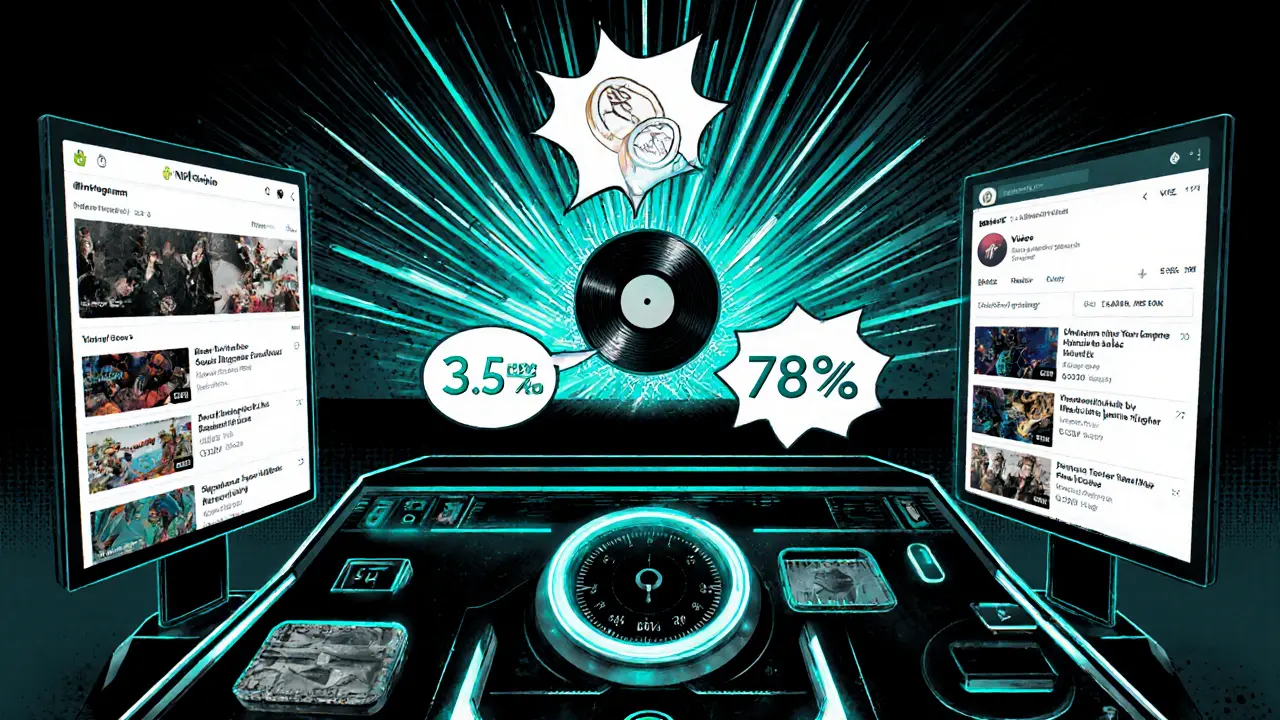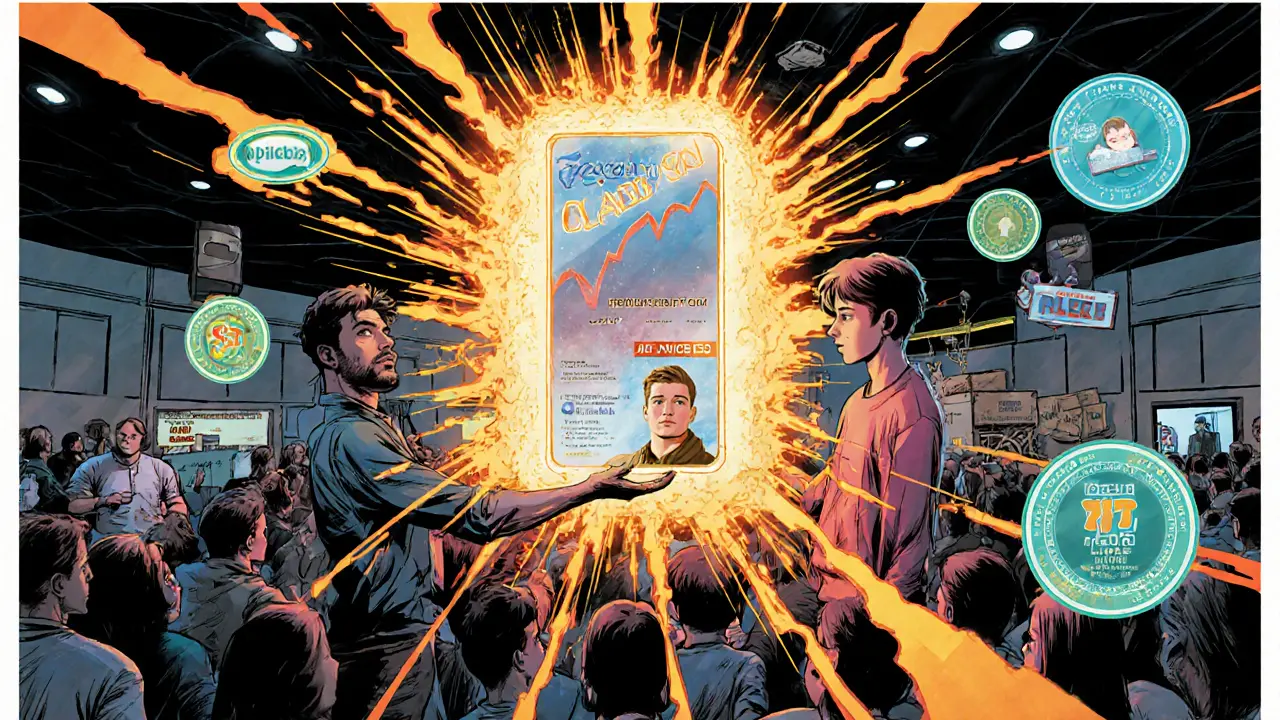NFT Royalty Earnings Calculator
Calculate Your Secondary Sale Income
How much could you earn from royalty payments on resales? Based on 2025 industry averages.
Your Estimated Earnings
For every $100 NFT sold, you could earn $3.50-$5.50 per resale (average 3.5%-5.5% royalty rate)
Creators aren’t just posting content anymore-they’re building businesses on blockchain
In 2021, NFTs were all about pixelated apes and expensive JPEGs. By 2025, that’s changed. The real story isn’t speculation-it’s revenue. Creators who once relied on shaky ad revenue from TikTok, YouTube, or Instagram are now using NFTs to lock in income that doesn’t disappear when an algorithm changes. This isn’t a trend. It’s a structural shift.
Think about it: if you’re a musician, artist, or video creator, your income used to depend on platforms that could cut your earnings overnight. TikTok banned accounts without warning. YouTube demonetized videos for vague policy violations. Instagram changed its feed so often, even loyal fans stopped seeing your posts. NFTs solve that. They give creators direct ownership over their audience relationships-no middleman needed.
How NFTs actually make money for creators today
Most people still think NFTs are about selling digital art. That’s outdated. In 2025, the real value is in what the NFT unlocks after the sale.
- 78.2% of successful creator NFT projects offer exclusive content-think early access to videos, behind-the-scenes footage, or members-only livestreams.
- 41.7% let holders vote on future projects. Should the next album be rock or electronic? Should the next comic series focus on character A or B? Fans decide.
- 36.9% tie NFT ownership to physical goods. Own the NFT? Get a signed vinyl, limited print, or custom merch shipped to your door.
- 28.4% let you use your NFT across platforms-like bringing your digital badge from Discord to YouTube or Shopify.
The biggest win? Royalties. When someone resells your NFT, you get paid-again. By 2025, the average royalty rate settled at 3.5-5.5%. That doesn’t sound like much, but multiply it by thousands of resales, and it adds up. Successful creators now get 68.3% of their total NFT income from these secondary sales. That’s not a one-time payout. That’s recurring revenue.
Compare that to YouTube, where creators earn $2.47 per thousand views, or Spotify, where it’s $0.63 per stream. NFTs don’t replace those streams-they supplement them with something more stable.
Who’s actually making this work?
NFTs aren’t for everyone. They work best for creators who already have a tight-knit community.
Take digital artist Beeple. He made headlines in 2021 with a $69 million NFT sale. Today, only 42% of his income comes from NFTs-but that’s still more than $2 million a year, mostly from royalties. His NFTs aren’t just art. They’re keys to his private Discord, early access to new work, and invitations to real-world events.
On the other hand, creators with under 10,000 followers who tried selling NFTs as digital collectibles in 2022? 62.4% failed. Why? Because they didn’t offer anything beyond the image. No utility. No connection. No reason for someone to buy.
The winners in 2025 are creators who focus on community first, technology second. They poll their audience before launching. They test ideas in Discord. They give free NFTs to their most loyal fans as a thank-you-not as a sales tactic. That builds trust. And trust turns buyers into lifelong supporters.

The tech behind it isn’t scary anymore
Remember when launching an NFT meant coding smart contracts and paying $200 in gas fees just to mint one item? That’s gone.
Today, 83% of creators use no-code tools:
- Shopify’s NFT Studio (launched Q3 2024) lets you tie NFT ownership to physical products. Buy the NFT? Get the shirt. No shipping hassles.
- Instagram’s NFT integration (beta in Q1 2025) lets you post your NFTs directly from your wallet. Your followers see them in their feed-no need to leave the app.
- YouTube’s experimental NFT-backed memberships let fans unlock bonus videos just by holding a specific NFT in their wallet.
Most creators now use Ethereum (68.3% of projects), Polygon (19.7%), or Solana (8.2%). These networks handle the heavy lifting. You just pick a template, upload your file, set your royalty rate, and hit publish.
You don’t need to understand blockchain. You just need to understand your audience.
Why this matters more than ever in 2025
The creator economy is exploding-projected to hit $1.3 trillion by 2033. But platforms are getting more controlling, not less.
Brands are pulling back from influencer marketing. TikTok bans are on the rise. Algorithm changes are constant. In this chaos, NFTs act like digital real estate. You own it. You control it. No one can take it away.
Creators using NFTs report 3.2x higher income stability during platform upheavals. When TikTok’s algorithm shifted in Q2 2025, creators without NFTs saw their reach drop by 40-60%. Those with NFT communities? Their engagement stayed flat-or even grew.
That’s not luck. That’s strategy.

The downsides? They’re real-but fixable
NFTs aren’t magic. There are hurdles.
- Audience confusion: Only 38.7% of social media users understand what an NFT does. You’ll spend time explaining it. That’s okay. Most people don’t get Bitcoin either-but they still use it.
- Technical glitches: 63.2% of creators report wallet connection issues or gas fee surprises. Use platforms like OpenSea or Shopify. Avoid niche marketplaces with poor documentation.
- Initial effort: Setting up your first NFT project takes 8.7 hours on average. That’s longer than running a single sponsored post. But it’s a one-time cost. After that, royalties keep flowing.
The biggest risk? Trying to sell NFTs like a product instead of a relationship. If your NFT doesn’t make your fans feel special, it’s just another JPEG.
Where this is headed
NFTs are merging with AI. Creators now use AI tools to generate personalized NFT variants-like a custom music clip based on a fan’s favorite lyric, or a digital portrait styled after their profile picture. These aren’t mass-produced. They’re one-of-a-kind tokens made just for one person.
By 2027, NFTs are expected to make up 12.7% of total creator economy revenue-up from just 4.3% in 2023. That’s $54.7 billion. Not because people are speculating. Because creators are building real businesses.
The future belongs to those who stop chasing viral trends and start building owned audiences. NFTs are the tool that makes that possible.
What to do next if you’re a creator
If you’re thinking about trying NFTs, here’s your roadmap:
- Start small. Don’t launch 10,000 NFTs. Start with 50 for your top 50 supporters. Make them free. Just to test.
- Offer real value. What do they get? A private podcast? Voting rights? A physical item? Make it meaningful.
- Use no-code tools. Go with Shopify, OpenSea, or Instagram. Skip the coding.
- Communicate clearly. Explain in simple terms: "This NFT gives you access to X. You own it forever. You can sell it later, and I’ll get a cut."
- Build in public. Share your journey. Post on Reddit, Discord, Twitter. People love behind-the-scenes stories.
This isn’t about getting rich quick. It’s about building something that lasts-long after the next algorithm update hits.


Derayne Stegall
November 15, 2025 AT 18:15Ryan Hansen
November 17, 2025 AT 13:12Aayansh Singh
November 19, 2025 AT 02:35